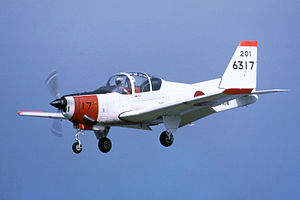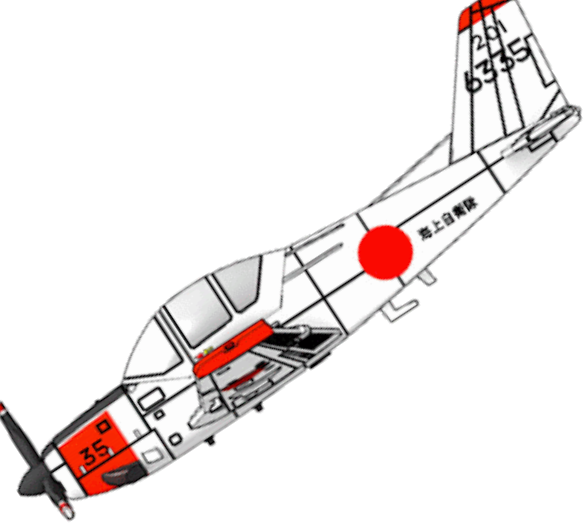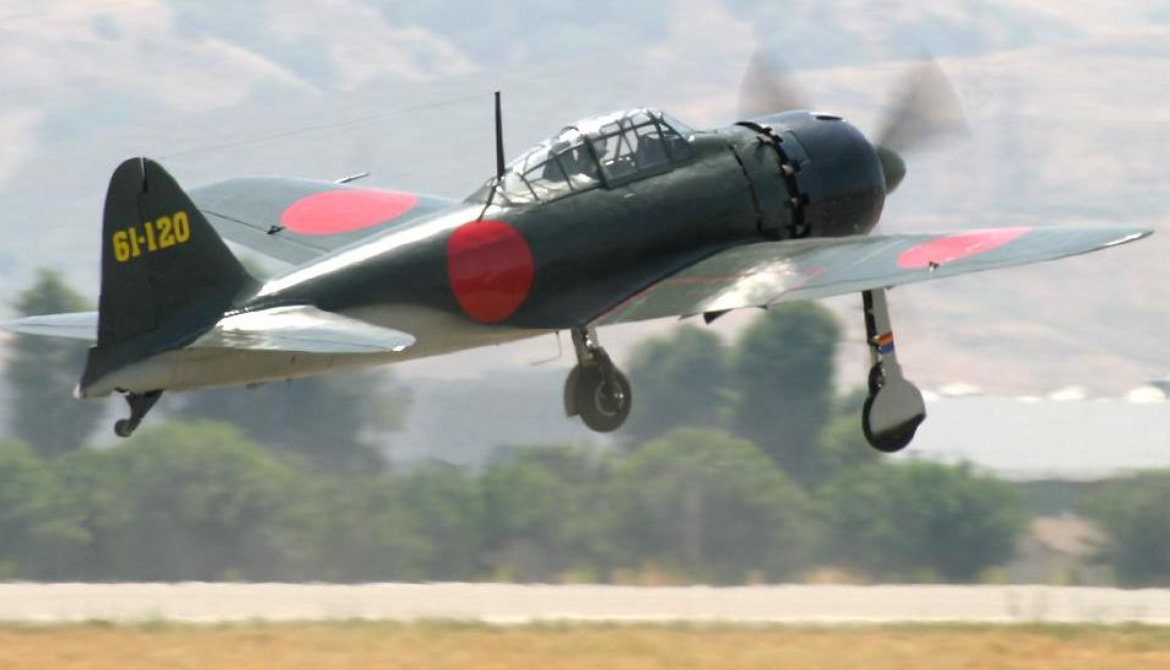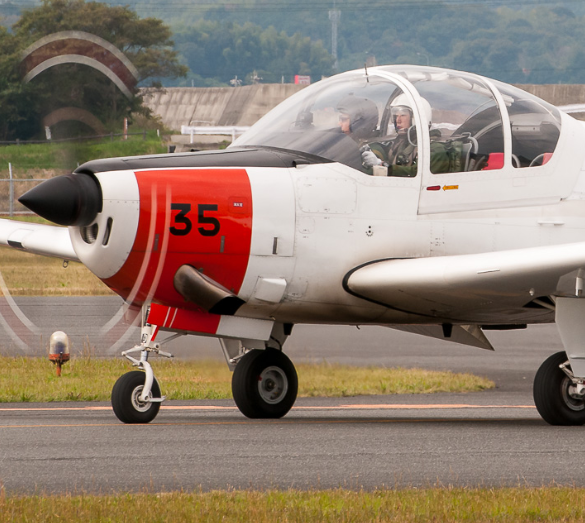Fuji Heavy Industries, Ltd. Fuji T-5 or KM-2Kai
 |
|
| General information | |
|---|---|
| Type | Basic trainer |
| Manufacturer | Fuji Heavy Industries |
| Primary user | Japan Maritime Self-Defense Force |
| History | |
| Introduction date | 1988 |
| First flight | 28 June 1984 |
| Developed from | Fuji KM-2 |
|
|
.
History Fuji Heavy Industries, Ltd. Fuji T-5 or KM-2Kai trainer aircraft
Introduction date 1988
First flight 28 June 1984

The T-5 is an all-metal low-wing cantilever monoplane powered by an Allison 250-B17D turboprop with a three-bladed constant speed propeller. It has a retractable tricycle landing gear with the main gear retracting inwards and nose gear rearwards. The T-5 has an enclosed cabin with a sliding canopy and two side-by-side seats, and dual controls, in the aerobatic version and four seats in pairs in the utility version.
The Fuji T-5 or KM-2Kai is a Japanese turboprop-driven primary trainer aircraft, which is a development of the earlier Fuji KM-2. The student and the instructor sit side-by-side..
Operational history

Design and development
The Fuji T-5 was developed by Fuji Heavy Industries as a replacement for the piston-engined Fuji KM-2 (itself a development of the Beechcraft T-34 Mentor) as a primary trainer for the Japan Maritime Self-Defense Force. Fuji refitted a KM-2 with an Allison Model 250 turboprop engine in place of the original Lycoming piston engine, the resulting KM-2D first flying on 28 June 1984 and being certified on 14 February 1985. The KM-2Kai is a further development of the KM-2D, with a modernised cockpit with side-by-side seating and a sliding canopy replacing the original KM-2's car type side doors (which were retained by the KM-2D)
0
KmCeiling
0
KmCombat RANGE
0
Km/hAircraft Speed
0
Max Crew
Photo Gallery
Fuji Heavy Industries, Ltd. Fuji T-5 or KM-2Kai trainer aircraft
Introduction date 1988 First flight 28 June 1984


Fuji Heavy Industries, Ltd
Fuji Heavy Industries, Ltd. Fuji T-5 or KM-2Kai trainer aircraft
Introduction date 1988 First flight 28 June 1984
General Info
-
-
- Crew: 2
- Length: 8.4 m (27 ft 7 in)
- Wingspan: 10 m (32 ft 10 in)
- Height: 2.9 m (9 ft 6 in)
- Wing area: 16.5 m2 (178 sq ft)
-
Powerplant
-
-
- Empty weight: 1,082 kg
- Max takeoff weight: 1,805 kg
- Powerplant: 1 × Allison Model 250-B17D turboprop, 261 kW (350 hp)
- Propellers: 3-bladed constant-speed propeller
-
-
-
-
-
Performance
- Maximum speed: 357 km/h (222 mph, 193 kn) at 2,440 m (8,005 ft)
- Cruise speed: 287 km/h (178 mph, 155 kn)
- Stall speed: 104 km/h
- Never exceed speed: 413 km/h
- Range: 945 km (587 mi, 510 nmi)
- Service ceiling: 7,620 m
.
Links to Youtube & Others
The T-5 is an all-metal low-wing cantilever monoplane powered by an Allison 250-B17D turboprop with a three-bladed constant speed propeller. It has a retractable tricycle landing gear with the main gear retracting inwards and nose gear rearwards.
Fuji Heavy Industries, Ltd. Fuji T-5 or KM-2Kai
The KM-2Kai was ordered by the JMSDF as the T-5 in March 1987,[2] with deliveries of the KM2-Kai to the Japanese Self Defence Forces
Youtube Link
The T-5 serves with the 201 Air Training Squadron at Ozuki Air Field.[3] The original KM-2 is no longer in service.












